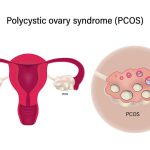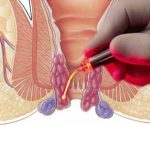Introduction: Aging gracefully often comes with its own set of challenges, and one of the most common concerns among older adults is the health of their eyes. As we age, our eyes undergo natural changes that can predispose us to various eye diseases and conditions. In this comprehensive guide, we will explore the most prevalent eye diseases affecting aging adults, including cataracts, age-related macular degeneration (AMD), glaucoma, diabetic retinopathy, and dry eye syndrome. By understanding the symptoms, risk factors, prevention strategies, and treatment options for these conditions, we can empower ourselves and our loved ones to maintain optimal eye health as we age.
1: Cataracts – Cataracts are a common age-related eye condition characterized by clouding of the lens, leading to blurred vision and eventual vision loss if left untreated. In this chapter, we will discuss the causes and risk factors associated with cataracts, such as aging, genetics, UV exposure, and certain medical conditions. We will explore the symptoms of cataracts, including cloudy or blurred vision, sensitivity to light, and difficulty seeing at night. Additionally, we will delve into the various treatment options available for cataracts, including corrective lenses and cataract surgery, and provide tips for prevention and early detection.
2: Age-Related Macular Degeneration (AMD) – Age-related macular degeneration (AMD) is a progressive eye disease that affects the macula, the central part of the retina responsible for sharp, central vision. In this chapter, we will examine the two main types of AMD – dry AMD and wet AMD – and discuss their respective symptoms, risk factors, and progression. We will explore the role of genetics, aging, smoking, and diet in the development of AMD and highlight the importance of regular eye exams for early detection. Furthermore, we will outline treatment options for AMD, including lifestyle modifications, nutritional supplements, injections, and photodynamic therapy.
3: Glaucoma – Glaucoma is a group of eye diseases characterized by damage to the optic nerve, often caused by elevated intraocular pressure (IOP). In this chapter, we will delve into the different types of glaucoma, including open-angle glaucoma, angle-closure glaucoma, and normal-tension glaucoma, and discuss their symptoms, risk factors, and complications. We will explore the importance of regular eye exams and comprehensive screenings for diagnosing glaucoma in its early stages when treatment is most effective. Additionally, we will outline treatment options for glaucoma, such as medicated eye drops, laser therapy, and surgery, and provide tips for managing the condition and preventing vision loss.
4: Diabetic Retinopathy – Diabetic retinopathy is a common complication of diabetes that affects the blood vessels in the retina, leading to vision loss if left untreated. In this chapter, we will discuss the two main stages of diabetic retinopathy – nonproliferative diabetic retinopathy (NPDR) and proliferative diabetic retinopathy (PDR) – and examine their symptoms, risk factors, and progression. We will explore the importance of regular eye exams for individuals with diabetes and highlight the role of blood sugar control, blood pressure management, and healthy lifestyle habits in preventing and managing diabetic retinopathy. Furthermore, we will outline treatment options for diabetic retinopathy, including laser therapy, injections, and surgery, and provide guidance for individuals living with diabetes.
5: Dry Eye Syndrome – Dry eye syndrome is a common condition characterized by inadequate tear production or poor tear quality, leading to symptoms such as dryness, irritation, and discomfort. In this chapter, we will explore the causes and risk factors associated with dry eye syndrome, including aging, hormonal changes, environmental factors, and certain medications. We will discuss the symptoms of dry eye syndrome and the impact it can have on daily activities and quality of life. Additionally, we will outline various treatment options for dry eye syndrome, including artificial tears, prescription medications, lifestyle modifications, and advanced therapies such as punctal plugs and intense pulsed light (IPL) therapy.
Conclusion: In conclusion, aging adults are at an increased risk of developing various eye diseases and conditions that can significantly impact their vision and overall quality of life. By understanding the symptoms, risk factors, prevention strategies, and treatment options for common eye diseases such as cataracts, age-related macular degeneration (AMD), glaucoma, diabetic retinopathy, and dry eye syndrome, individuals can take proactive steps to maintain optimal eye health as they age. Regular eye exams, healthy lifestyle habits, and timely interventions are key to preserving vision and enjoying a vibrant and independent lifestyle in later years.
#pune #pcmc #chinchwad #hospital #medical #medicalservices #cataract #eyedoctor #eye #glaucoma #conjunctivitis #ophthalmologist #humaneye #eyediseases #eyepain #pinkeye #hazeleyes #presbyopia #eyeinfection #phaco #phacomachine #phacosurgery #eyeproblems #motibindu #motibinduoperation #dryeye #cataractoperation #cataracttreatment #eyesurgeon #motibinduoperation













